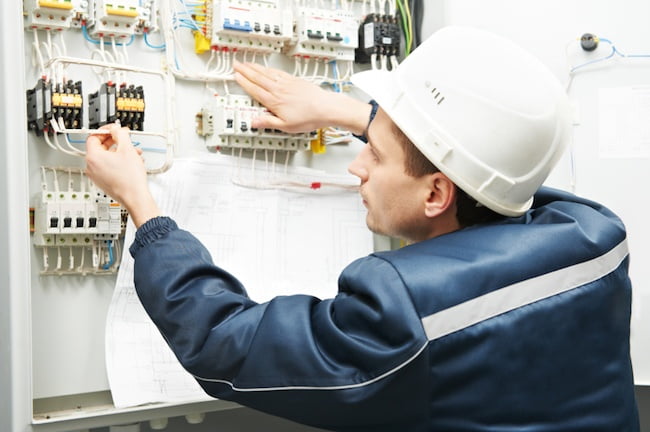5 Keys to Protecting an Industrial Control Panel Enclosure

When assessing what kind of protection is needed for an industrial control panel enclosure, there are five key factors to consider. These are ambient temperature, humidity, pollution, weather and dust. Once the effects of these factors are adequately assessed, it’s a relatively simple task to evaluate the type of enclosure that’s required and decide how to manage the internal temperature. Here’s how these five key aspects affect enclosure cooling.
1. What Is the Ambient Temperature Variation?
Electrical equipment is sensitive to temperature, and once it gets too hot, its service life is reduced by half for every 18 °F temperature increase. Based on an assessment of the equipment typically installed in an industrial control panel enclosure, the ideal temperature to aim for is 95 °F.
Once the desired enclosure temperature has been chosen, the ambient temperature range should be established. If the maximum ambient temperature is higher than the chosen enclosure temperature, it will be necessary to use an air conditioner to cool the enclosure. If it is lower, depending upon the environmental considerations below, the enclosure could be cooled using filtered fans or an air to air heat exchanger.
2. Is the Humidity High?
The effect of humidity is often overlooked in an industrial control panel enclosure. However, in areas that experience high humidity, the air contains a significant quantity of water, and internal condensation can be a serious problem. Apart from the risk of electric shock, water dripping onto electrical equipment may cause equipment damage and corrosion.
If it’s hot and humid, an enclosure air conditioner dries the air, protecting the equipment. During cool periods when the air conditioner is off, an enclosure heater can keep the temperature above the dew point and prevent condensation.
3. Is the Air Polluted?
Atmospheric pollution is detrimental to electrical equipment. Enclosures may be located in badly polluted areas, become exposed during the processing of corrosive chemicals or be subjected to high-pressure wash downs with cleaning materials.
If there’s a risk of chemical contamination, the industrial control panel enclosure and its cooling system should be designed to prevent corrosive chemicals and vapors from entering the enclosure. The most effective way to achieve this is to use a NEMA 4X enclosure fitted with a NEMA 4X closed loop cooling system.
4. Is the Enclosure Exposed to Weather and Water?
If an enclosure is situated where it is exposed to water either from the weather or due to the industrial processes employed in the plant, it is essential that water does not enter the enclosure.
Several solutions are possible. Enclosures fitted with filtered fans can be equipped with 3R shrouds that provide protection to NEMA 3R requirements. For extreme weather, including snow and ice, or when electrical enclosures are likely to be hosed down, the enclosure and cooling system should be designed to comply with NEMA 4 or 4X requirements.
5. How Much Dust Is in the Air?
Dirt and dust can cause havoc in an electrical enclosure. First, it blocks fan filters, and the restriction in the air flow could lead to electrical equipment overheating. Second, it collects on equipment and prevents electrical contacts from closing properly, which may lead to contact failure or breakdown. In locations with high dust levels, it is recommended that high capacity filters are installed to extend the periods between filter changes and to avoid reduction in the air flow. If a closed loop cooling solution is chosen, the enclosure rating should be a minimum of NEMA 4 for indoors and 4X for outdoors.
Putting It All Together
Once these five key environmental factors have been assessed, it’s time to establish the optimum cooling solution. One of the best ways of doing this is to use an online enclosure temperature management calculator because this takes into consideration difficult-to-assess factors such as the thermal conductivity of different enclosure materials, paint finishes and external factors such as solar radiation. This calculation will show if a filtered fan solution is adequate, if an air to air heat exchanger is required or if an enclosure air conditioner is necessary.
The choice of the optimum cooling solution is not always straightforward and the Thermal Edge Support Team is always available to help you choose the best solution.

